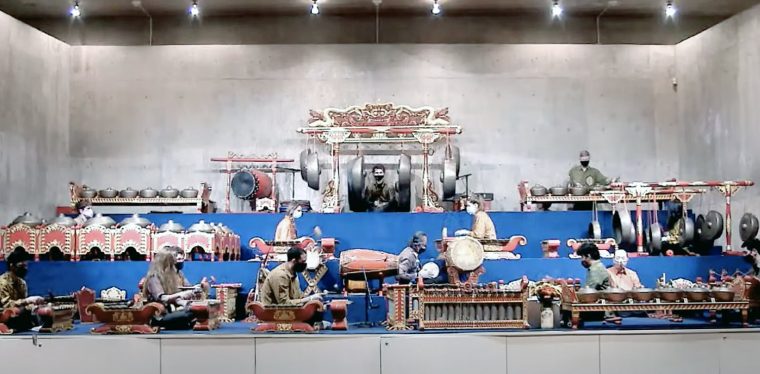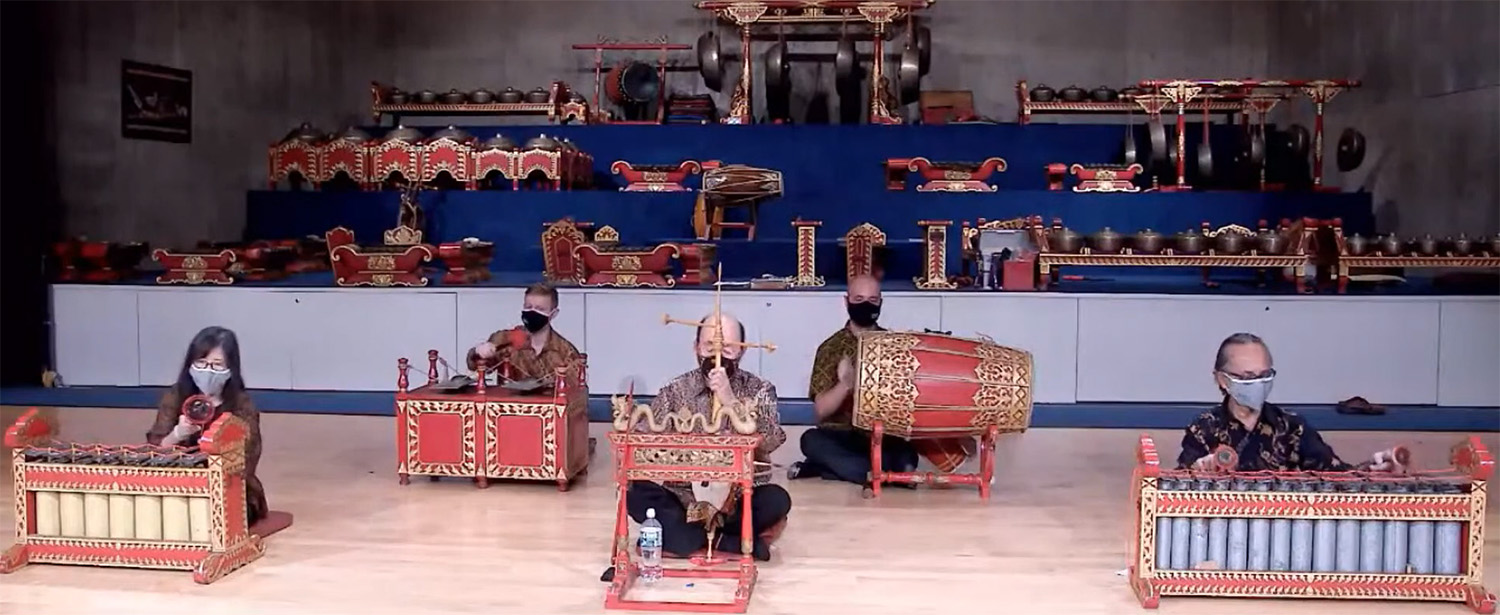Gamelan Ensemble Provides Virtual Mini-Concerts, Demonstrations During Pandemic


During the COVID-19 pandemic, most of Wesleyan’s musical activities and classes were canceled, drastically adjusted, or moved to virtual platforms. Fortunately, for Wesleyan’s Javanese gamelan classes, students were still allowed to meet in-person as long as they followed strict guidelines: wear a mask and disposable gloves, social distance, and frequently use hand sanitizer and disinfecting wipes.
“The university made all of these available to the students in the World Music Hall, where the gamelan meets,” explained Winslow-Kaplain Professor of Music Sumarsam. “The gamelan instruments were set up six feet apart, and the students were required to maintain that distance while playing or sitting in the audience area for discussion, and when lining up to enter or exit the hall. We also planned to have occasional online lectures and discussions, so the group did not have to meet in person as often.”
In the process of planning their hybrid MUSC 451: Javanese Gamelan-Beginners and MUSC 452: Javanese Gamelan-Advanced courses, Sumarsam and fellow gamelan instructor I.M. Harjito, University Professor of Music, decided to create a biweekly series of virtual mini-concerts and demonstrations, each one showcasing a different theme or style in 30-minute formats. “The production staff of CFA has worked tirelessly to publicize and produce these virtual mini-concerts and demonstrations,” Sumarsam noted.
From Sept. 28–Nov. 23, the series included two small gadhon ensembles featuring soft-sounding instruments and macapat, or sung poetry; a gendhing soran, a loud-sounding instrumental in Yogyakarta Style; a wayang kulit, or shadow-puppet play with gamelan music; a concert featuring the work-in-progress of beginning Javanese gamelan students; and a classical music of Central Java performance showcasing Surakarta and Yogyakarta styles. Watch the entire archived series online here.
View images of the concert series below:





